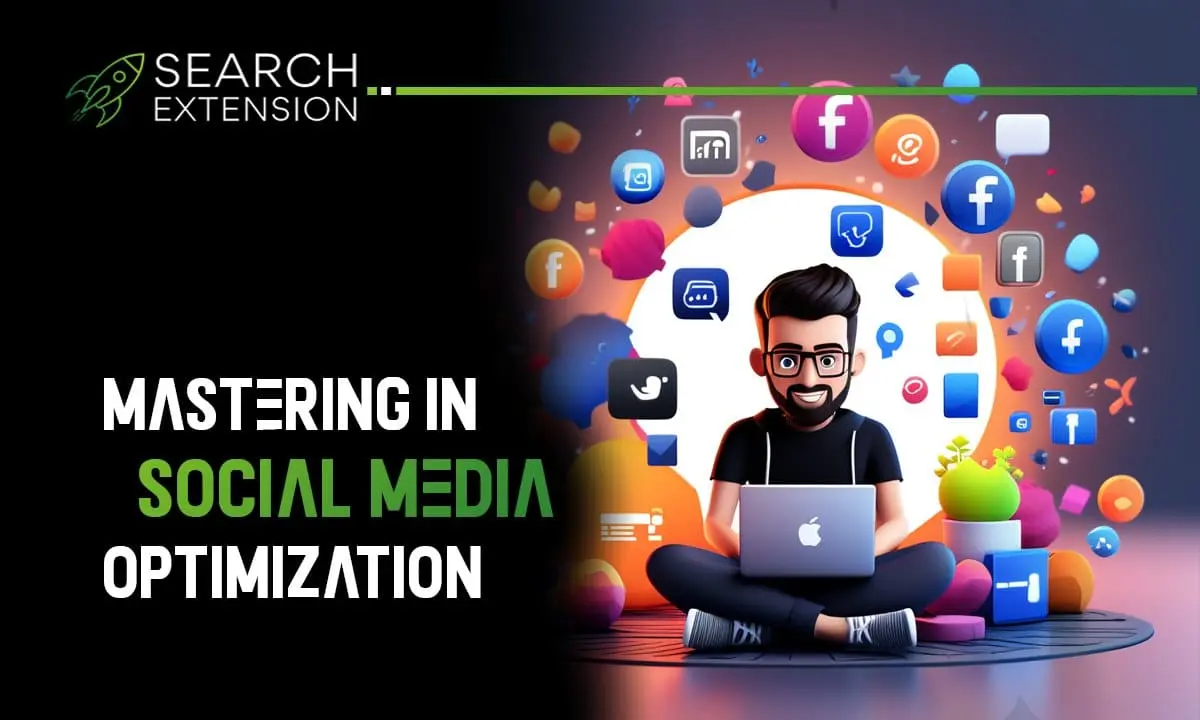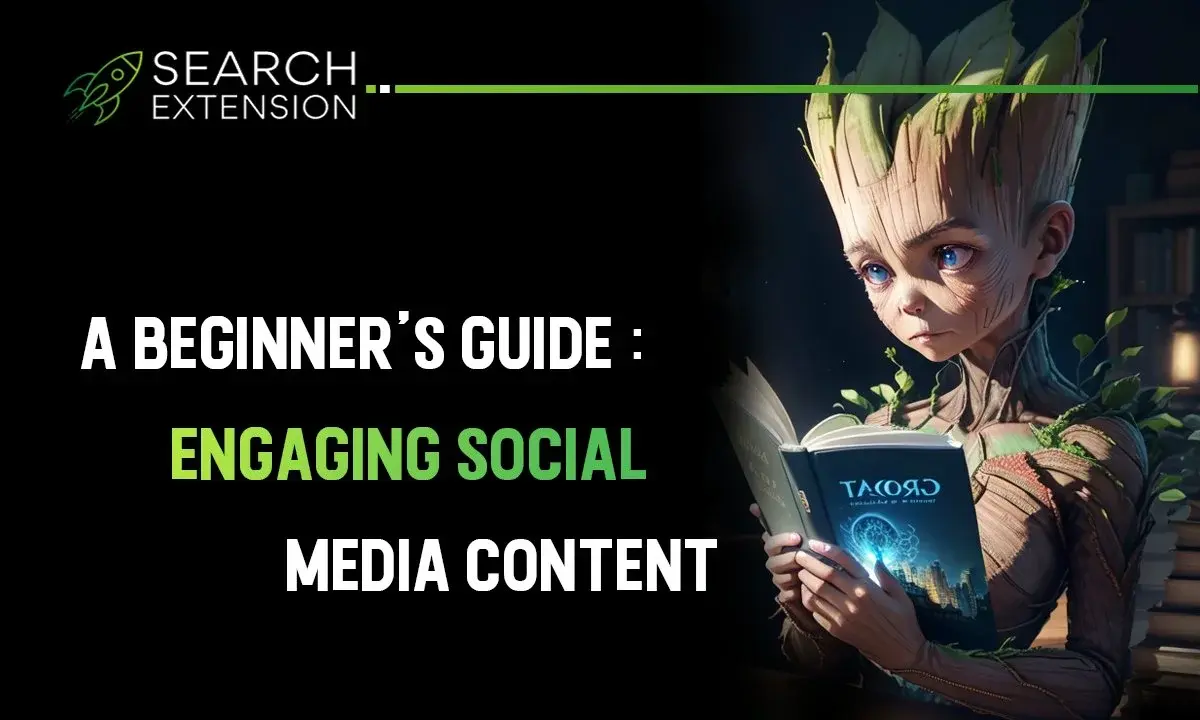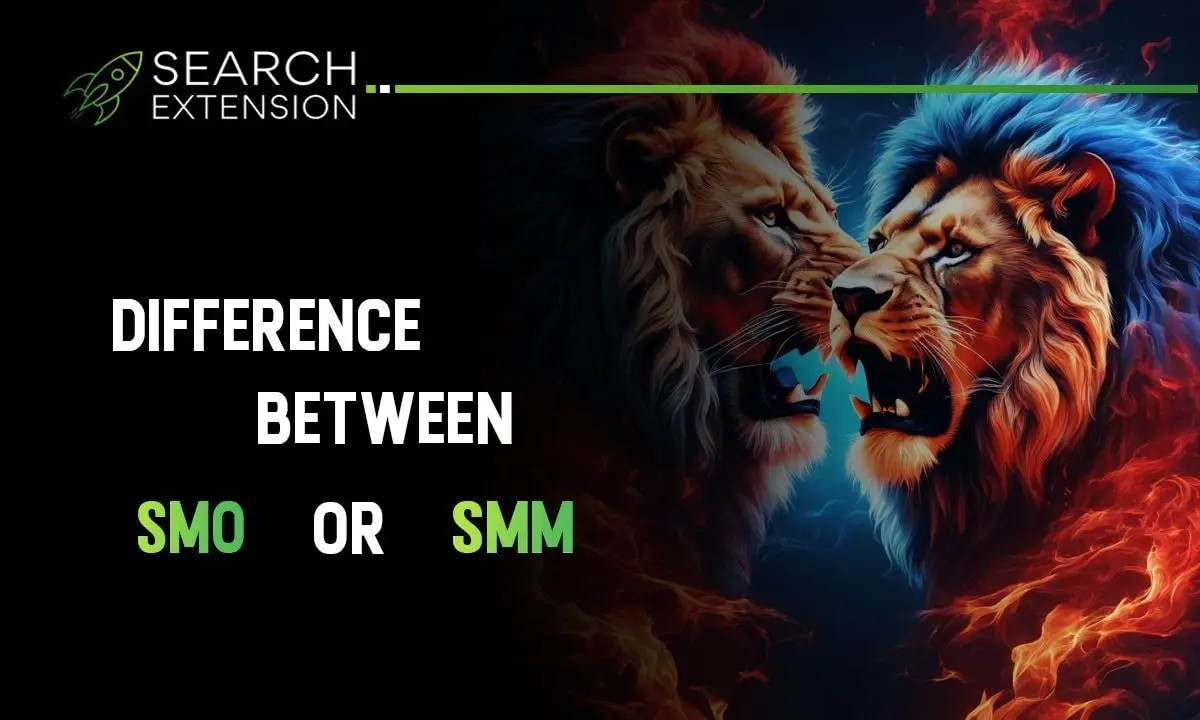Have you ever wondered why some social media accounts have thousands of followers and tremendous interaction, yet others struggle to earn a profit? In truth, being successful on social media requires much more than just publishing regularly.
To expand your reach and engagement on various platforms, you must grasp the differences between them and employ the appropriate methods. In this post, we'll go over best practices for improving your exposure and interaction on some of the most prominent social media networks, such as Facebook, Instagram, Twitter, and LinkedIn.
Whether you're a business owner or influencer or want to build your brand, these suggestions can help you maximize your social media presence and attract your target audience.
What is a Social Media Algorithm?
A social media algorithm is a collection of instructions intended to solve a certain problem, task, or decision. Algorithms direct computer activities, including content analysis, information retrieval, and object identification.
Social media algorithms refer to the rules, symbols, and information that control how the site operates. These algorithms control how content is filtered, sorted, selected, and recommended to users. Algorithms influence our decisions and the stuff we view on social media.
Why do Social Media Algorithms Matter?
Every social media network has unique user preferences. Without filtering, users must sift through a vast amount of posts, which can be overwhelming.
Here's where algorithms come into play. Social media platforms utilize powerful algorithms based on intelligence instructions to carefully categorize information and match it to the audience's interests. Understanding the intricacies of algorithms and their significance is critical to any ad marketing strategy:
Filter Loud Content
When a new TikTok video or Facebook post is uploaded, it becomes part of a vast collection of online content. Algorithms work similarly to libraries, sorting and connecting users based on their interests. This keeps people from becoming overwhelmed by limitless content and allows them to find information they enjoy faster. Algorithms help users find significant postings, interact with others who share their interests, and explore new topics.
Show More of What Users Are Interested In
Show users more of their preferred content across social media platforms by utilizing powerful algorithms to track user activity. These algorithms control content visibility, matching, and suggestions based on user actions, habits, and preferences. For example, if you are interested in gadget-related posts, you will see the majority of this information. This customization increases user engagement, which improves the consumer experience.
Customer Experience
Users now have greater control over their content experience. Algorithms use data to provide personalized recommendations. On services such as Instagram, you can control your feed by hiding comments, filtering comments, or modifying your material by clicking "dislike."
Maximize Organic Reach
Understanding social media algorithms can help you improve your online social presence. As more people discover your material, the algorithm improves at identifying users with similar interests. Creators and marketers can optimize their content for algorithms to maximize its dissemination possibilities. When a post has a high level of engagement, the algorithm promotes it to a larger audience.
How Do Social Media Algorithms Work?
The social media algorithm is meant to take into account a variety of criteria. Some of these are content-based, in which the content algorithm is meant to match the user's preferences with specific terms that the system anticipates the user will appreciate based on their profile. When users are interested in one item or category, they will be routed to additional items in that category.
Additionally, algorithms can collaborate. Integration entails matching users with other users who appear to have similar interests; this exposes users to posts or videos that they are interested in based on searches for specific sites by individuals with comparable profiles. Algorithms can be context-aware, which means they can process personal information, such as the user's location, and incorporate it into the calculation method.
Finally, machine learning employs computers to assess human learning by providing fresh information, such as algorithmic suggestions, that allows individuals to analyze and gain knowledge from the real world, as well as improve the performance of certain activities.
What Constitutes the Social Media Algorithm?
Algorithms are based on complicated science and use mathematics, psychology, and machine learning to organize unique data streams. These algorithms are frequently based on quantitative metrics such as the number of likes, shares, comments, and engagements on each social networking site's content. Other metrics include:
Importance
Controlling which posts are displayed at the top of social media. It takes into account a variety of characteristics, including the type of information you most frequently engage with and its current location. As a result, you will find content that matches your interests.
Content Filtering
Content Filtering customizes your social media feeds by prioritizing postings depending on characteristics such as collaboration, activity, and your relationship with the producer of the content words. It functions as an autonomous gatekeeper, neatly shaping your online experience.
For example, if you spend more time watching videos than reading posts, the platform will change its algorithm to prioritize video content in your feed. Support payments sustain it. Advertisers utilize algorithms to target individuals with similar demographics based on their online behavior and profile information. This unity is so uneven that it's frequently indistinguishable from organic content.
User Behavior
The algorithm monitors user activity on social media (likes, shares, comments, and time spent on specific postings). It also tracks what users look for on the network, such as trends, hashtags, or clicking on a certain post. Each user's behavior is studied to fine-tune and monitor essential material that will show on your social networks in the future.
Why Do Social Algorithms Change?
Search engine and social media algorithms are continually evolving to provide a better network for you while also ensuring the system's security.
Improving User Experience
Changes in the core procedure are aimed at improving the end-user experience. Have you ever noticed that the stuff you view on social media is primarily about your previous interactions? Platforms continually adjust their algorithms to show consumers more of the material they enjoy, which keeps them engaged for longer.
Fighting Bots and Spam
Bots and spam are a problem for social media networks. Algorithms have been created to detect and filter illicit activities, preventing bad actors from harming the user experience.
Maximizing Coverage
Changes in algorithms may affect or disturb users on a specific platform. The platform is constantly improving its algorithms to balance user experience with the ability to provide diverse sorts of content to users. This could entail rearranging the order of important posts in their feed, emphasizing information that generates meaningful engagement.
Social Media Algorithms for Popular Platforms
Although social media platforms differ, there is no single algorithm that works for all of them. Personalization tactics vary even for different types of material on social media sites. Let's look at the different sorts of social media used by famous social media websites.
Facebook's algorithm
With almost 3 billion monthly users (as of Q3 2023), Facebook has the most powerful social algorithm. The world's most popular social media platform. How do we get everyone linked to the platform?
According to Meta, the Facebook ranking algorithm consists of four steps:
- Products: Products in your feed include pages that your friends have posted, pages you follow, and groups you have first joined.
- Signals: Algorithms estimate what you'll find interesting in messages based on the content you enjoy, the articles you share, and the comments you leave on them. These tags additionally include the view duration, content type, and other details.
- Prediction: These indications also indicate which information you will find most popular and beneficial. They anticipate how likely you or your friends are to comment on a post. They determine how the advertisement will be interacted with.
- Rank Score: This algorithm determines the "originality score" and then displays the post in your feed. When you open the app, adverts that provide more value to you will appear again. The technology also strives to guarantee that your feed has a variety of content types. Your program will contain content that has received a high number of likes, shares, and views.
Instagram algorithms
Instagram employs a variety of algorithms, classifiers, and approaches for each component of the platform.
- Feed: The feed displays the most recent posts from persons you follow, as well as posts from accounts you follow but do not follow. It examines your previous activity, including the individuals you follow, the people you communicate with on other accounts, and the posts you've saved and shared.
- Stories: You can view the stories of brands and individuals you follow. The system considers your viewing history, interaction with the story, and general relationship with this individual.
- Searches: Instagram predicts what will happen in the Search tab based on your past interactions with posts you've liked, saved, shared, and commented on. Interacting with some ad kinds will display a lot of content that is similar to the one you engaged with.
- Scrolls: Scrolls are about having fun. Instagram researches to assess whether users find Reels engaging or worth their time. It predicts how to repost, watch, and like the video, as well as how to navigate to the audio page to play it.
TikTok Algorithm
TikTok's algorithm is primarily focused on giving new content to users. It applies three rating tags:
- Video data: Tags, subtitles, audio, and other pertinent factors aid in understanding and ranking video material based on the For You page.
- User interaction: Recommendations are based on the videos you like or share, the accounts you follow, the comments you leave, and the content you generate.
- Device and account settings: This covers your desired language, settings, and device type. These requirements ensure that the application functions correctly for all users.
Twitter algorithm
Twitter's algorithm systems differ in how they recommend and display tweets on the site. The ranking signal contains the following:
Currentness: Topics are prioritized because the platform is frequently used for real-time updates worldwide. These appear on the platform's "What's Happening" section, among other places. The feed prioritizes newer tweets.
Important: It emphasizes tweets that are important and beneficial to the user based on their previous interactions, such as likes, retweets, and followers.
Media Profile: This algorithm guarantees that the content is diverse and appropriate for the media. Tweets, including movies, images, GIFs, or polls, will be moved to a later timeline.
LinkedIn Algorithm
Unlike other sites, LinkedIn has few places where you can share your material. The primary feed displays all connected content. The algorithm seeks to encourage participation.
- Publication quality: This method evaluates content quality using a set of abilities. If it contains spam or unrelated content, it will not show again. Assesses papers based on intellect, correctness, and teamwork.
- Connection: LinkedIn. Posts appear first in the connection feed. It is critical to have strong cooperation in specific sectors. If the message is valuable, it will quickly go across the network to connect with people's desires.
- Participation: This method aims to promote professional food-related material. It examines the engagement your content receives to see whether people want to see more of it. Answers, replies, and debates boost your chances of being recognized by the system.
Pinterest algorithm
Pinterest Algorithm takes advantage of the following aspects to cater to various interests:
- Domain Quality: This is critical to gaining awareness on the platform. If a popular Pin refers to the same website, the algorithm considers it good content.
- Pin Quality: Pin Quality is the most significant factor in platform analysis. It is built on teamwork and popularity.
- Pinner Quality: This term refers to the quality of your pins, the frequency with which they are shared, the quantity of contact they receive, and the sort of activity on the platform.
- Keywords: This controls whether your pins appear when users search for specific content or themes on the platform.
YouTube Algorithm
YouTube has become significant in the sector of video content, which is currently the most popular content kind. In 2022, US consumers will spend 21.3 hours per month on the YouTube app. How does the system prioritize YouTube recommendations while introducing new features, such as "Short Videos"?
Viewing History: What you've watched before influences the videos you see on the home page. If you subscribe to the gaming channel, you can see many videos regarding new games.
Engagement metrics: Engagement metrics include the amount of video views, likes and dislikes, shares, comments, and how long viewers spent watching the video. All metrics are taken into account while making video suggestions.
Content Strategy to Master the Social Media Algorithm
Creating an effective content calendar is essential for harnessing and exploiting social media to your benefit. Here are a few things to consider when planning your content:
Generate Quality Material
Quality always outweighs quantity. Your material should be relevant and helpful to your intended audience. It is critical to write well-researched, useful, or engaging articles. Social media algorithms help you reach more people by identifying relevant content.
Encourage Interactions
Encourage conversation by asking questions or including calls to action. Engaging content typically receives more likes, comments, and shares, indicating to the algorithm that your work is interesting and, hence, prominent in the feed.
Join the Trends
Learn about the latest social media trends. This is obvious from hot topics on Twitter, whereas Instagram shows you what's trending on your feed. Moving on to essential issues, create material that is appropriate for your target audience. Being aware and interested in topics relevant to your field might help you promote your material and reach a larger audience.
Be Open to Testing
Most social media sites are continually adding new features to make the experience more enjoyable. It also lets users search for various forms of material, such as videos, live broadcasts, and interactive stories. 70% of "non-video marketers" intend to start an online firm by 2023, demonstrating the importance of video in today's marketing strategies.
The optimal posting timings have been calculated for several platforms.
The Optimal Posting Timings Have Been Calculated for Several Platforms
Every social site has peak moments when users are active. Use analytics to determine when your target audience is online and tailor your messages accordingly. Posts sent on time result in more interactions, which the system prefers.
Conclusion
Social media algorithms govern the visibility and reach of the content you see and share. Mastering this complex process is critical to the growth and success of social media. Social media management solutions can streamline this process.
High Performer is a platform that includes all of the tools you need for social media management. Whether you're using Facebook, Twitter, LinkedIn, or Instagram, the software provides numerous free tools to assist you manage the conversion algorithm. It also gives the knowledge required to generate highly interactive material using complicated algorithms. This social media management software proposes that you develop material relevant to your target audience's interests and engagement habits.
In a digital world with severe content competition, using tools like these is no longer optional but rather required. Using High Performer improves your chances of staying ahead of the competition and prevents your social media from going to waste.




